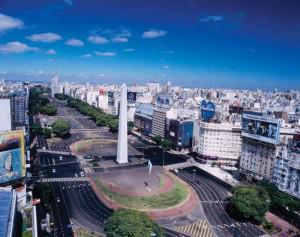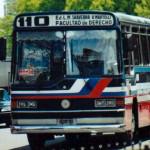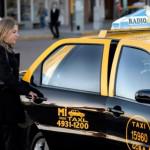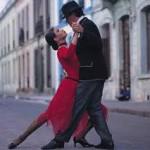It’s safe to say that I still have MANY things to learn about the way things work in Buenos Aires, but I thought it would be helpful to others to share some useful tips that I have learned over the past few weeks. It’s always good to do some research and prepare yourself for a big trip abroad and Buenos Aires is full of many other wonderful surprises that you likely will not even see coming. There are also other things that you should know ahead of time that will help make your transition into porteño (Buenos Aires local) life much smoother. The following is meant to provide you with a little “heads up” about what you can expect in Buenos Aires:

- US citizens traveling to Argentina need only a valid passport to enter the country on a tourist visa which is valid for up to 90 days (if planning trips to enter Paraguay and/or Brazil, you will need to obtain separate visas for entry into these countries). However, also know that you will have to pay US $140 when entering the country as an entry fee, but it is valid for up to 10 years. You can pay this fee with a credit card, cash, or travelers check. Please note that travelers from Canada will have different requirements for entry and information can be found here.
- Organize a ride from the airport to wherever you are going before leaving the States. One trust-worthy transportation option is Manuel Tienda Leon and there are several other good services online that offer similar prices. You can expect to spend about US $45-$55, and it is well worth the money instead of trying to negotiate a taxi in Spanish or even attempting to take all your luggage on a bus. The latter is likely just a recipe for disaster.
- Speaking of credit cards, you should inform your credit card company and/or bank that you will be traveling outside of the country so that they do not place a “hold” on your card when you use it. It might also be a good idea to bring two if you can. I leave one in a safe place at home just in case I lose my wallet or some sly pickpocket gets the better of me. This way you will still have backup access to money. Also, be aware that some US banks and credit card companies charge an international fee for using your card outside of the country.
- Many businesses in Buenos Aires prefer cash instead of credit cards, so it might be a good idea to bring dollars with you. If you go to an exchange house, you can typically get a better exchange rate than many banks here, so your dollar goes further. It’s important to know that most people here want dollars, but everybody pays for stuff in pesos; don’t expect to pay your taxista or buy your lunch/dinner with dollars. ATMs only dispense pesos as well (as far as I can tell). I would suggest also avoiding exchanging money at any airport regardless of where you are.
- If you plan on using a cell phone while you are here, I highly recommend that you read this blog entry. I was not prepared with the intricacies of getting a working phone set up here, so plan ahead if you think you might need one here.
- Speaking of phones, it’s good to know that electronics in Buenos Aires and all of Argentina are fairly expensive which was a bit unexpected for me. If you want to buy an iPhone/iTouch/iPad, new laptop, TV, etc. when you get here, you might want to think about buying something in the States/Canada first. You will probably save yourself some money. Also, you will need power converters for the electrical outlets in Buenos Aires, but you can get inexpensive ones at many ferreterias (hardware store) in the city. This site gives you a pretty good explanation for what/why/how.



- Depending on where you want to go, your main options in the city are walking/biking, taxis, subways (Subte), trains, and buses (colectivos).
- WALK/BIKE: Buenos Aires is a very walkable city, but it is also HUGE so bring a good pair of walking shoes. Riding a bike can help you cover a lot of ground as well, but Buenos Aires is a big city with a lot of traffic so take caution.
- TAXI: Taxis are everywhere and are relatively cheap compared to the US (average fare is 30 pesos or ~US $7-$8), but they can add up after awhile depending how often you use/need them.
- SUBTE: The Subte system has 5 different lines that all start in El Centro (downtown) and spread out in different directions. The system is very easy to navigate and each ride is only AR $2,50 pesos which is a great deal for getting around quickly.
- TREN: The Tren is a great way to explore some of the nearby suburbs outside of the city like San Isidro and Tigre in Zona Norte which makes for fun day trips. It can also be a good way to get around the city, but the other options listed here are typically the better choice. Tickets for the train are somewhere between $1-$2 pesos, so it’s a bargain for sure.
- COLECTIVO: The colectivo system is a bit overwhelming, but for the more adventurous travelers, it is an excellent way to get around the city on the cheap (~AR $1,20 pesos per ride). Do yourself a favor and get a bus guide (called a Guia-T) and do your best to figure it out when you get here. The buses also run 24 hours a day although not as regularly during the wee hours of the morning.
- This blog provides some helpful information for travel tips within the city.
- Practice Spanish before coming here if you can, even if you plan on taking classes here. Every little bit helps and it’s good to get a head start. Even just learning some basic phrases and everyday vocabulary can save you a lot of unnecessary headaches. Trust me.
- Read up on the culture and history of Buenos Aires and Argentina as a country. Not only is it interesting, but you will appreciate it much more when you arrive and feel more comfortable in your surroundings. Many different guidebooks (i.e. Lonely Planet) include a brief history in their introduction, plus they are just good books to have for any trip abroad. My only suggestion is that you should avoid trying to live or die by the books and be adventurous enough to discover places that aren’t mentioned in the books.
- HAVE FUN! Buenos Aires is an amazing city with tons to discover and is full of great people from all over the world. There are endless amounts of things to experience including the boliches (night clubs), the incredible wines, the delicious foods, the many museums, the beautiful parks, the futbol games, the polo matches, the asados (Argentine BBQ’s), the mate (Argentine drink similar to tea), the milongas (tango dance halls), and that is all just the tip of the iceberg in Buenos Aires. Argentina is a huge country with much much more to offer. I have heard it is a wonderful place from everyone who has been here, and I now know it to be true so take advantage of your time here!










